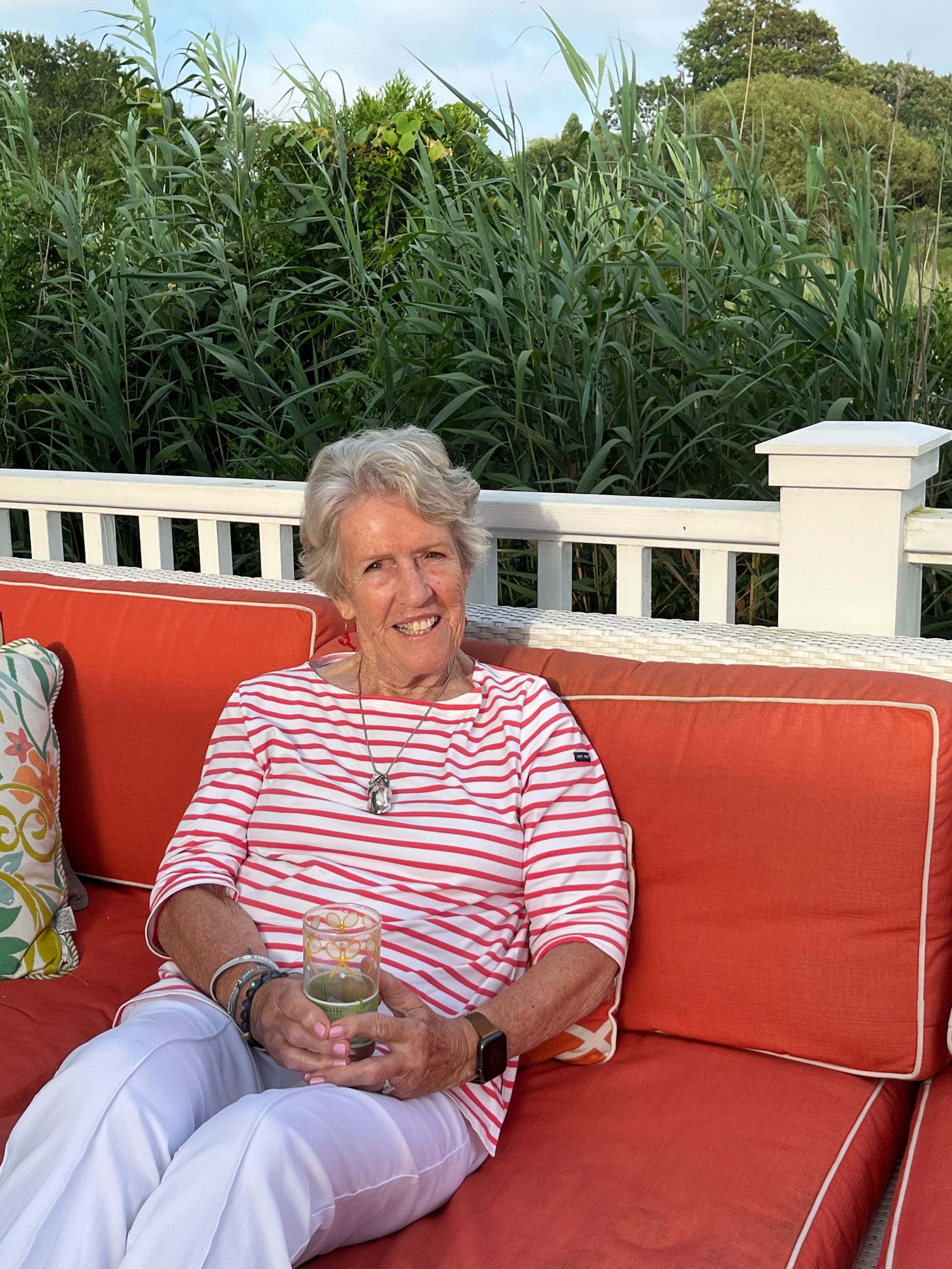MY NEW HERO
/I was recently asked to write a profile about Joyce Butler, our retired Town Historian, for the Tourist News, the best bi-weekly newspaper in southern Maine. Everyone in Kennebunk has heard of Joyce Butler, and she has legions of devoted friends throughout these coastal towns. I also had met her briefly decades ago.
These days the snowy-haired attractive lady is in her mid-80s, and her failing eyesight keeps her relatively housebound. Since Joyce doesn’t use a computer any more, I arranged to meet her for my interview the old-fashioned way. I telephoned, left a message, and she returned my call the next morning.
Several days later at 10 AM sharp, I drove in the circular gravel driveway of her two-hundred-year-old grey Colonial home. Joyce stood by her porch door (which held a sign, “Don’t Let the Cat Out”) and greeted me with a wonderful smile. For some reason, warm feelings overcame me, and I immediately hugged her, and she hugged me back. Joyce does that to you!
Over the next few hours we discussed her writing life and her current state of mind, books she adored writing and historical facts that keep itching her memory. When I left she asked if I would like to have a copy of one of her books — Pages From a Journal — a collection of columns she had written many years ago for the York County Coast Star.
I have now read nearly every column, several two or three times. “Fall” leapt off the pages and I wanted to share.
Joyce’s words are everything I wish I had the ability to say about autumn in the Kennebunks — or anywhere, for that matter. She dazzles me as a writer. I hope you enjoy “Fall” as much as I have. And if you’d like to read more about my new hero, go to this site: www.touristnewsmaine.com Once there, you’ll see a column on the left side. Scroll to the second item: online issues. That will bring up this week’s Tourist News (September 13, 2018) where my article (“Joyce Butler: A ‘Kept Woman’ Reflects on History in the Kennebunks’) is on page 4.
Now here’s Joyce in her own words.
FALL
by Joyce Butler
Spiders hide in my broom in the cellarway and scuttle angrily across the kitchen floor when I sweep. Crickets jump outside the back door, and at night I hear them fiddling somewhere under the house. The phlox in the garden have begun to go to seed, and the annuals have achieved a richness of color that bespeaks their maturity. The yard is still green, but if I look closely I see that the leaves on the trees are tired and those on a vine of woodbine that has climbed the lilac bush at the end of the drive have turned a dull red. Behind the fence false dragonhead flourishes blithely, enjoying its first flowering amid a tangle of asters whose blooming marks the end of blossom-time for all flowers. Wild asters are a sure sign that fall is here, and I don’t mind.
Autumn is my favorite season. During these brief weeks when nature gathers together all of her resources of color for one last splash before she casts it all aside and goes to rest, I come into my own. I am more attune with the world in autumn. This is the time of year for settling in: into one’s self as well as indoors, and I enjoy both myself and our house.
“D’ou venons-nous? Que sommes-nous? Ou’ allons-nous?” (Whence come we? What are we? Whither are we going?“) This is the inscription on a painting by Gaugin that hangs in the Museum of Fine Arts in Boston. It seems appropriate to think about that painting in the fall of the year. Its colors are the colors of the earth: yellow ochre, clay brown, primary blue, flame orange, and in the autumn, as in the spring, it is the workings of the earth which command our attention. We think about things we’ve taken for granted all summer, for we realize we’re watching the spectacle of nature drawing into itself. The trees draw back the chlorophyll from their leaves, plants devote their energy to the nourishment of roots while foliage dies, animals grow heavy with fat and fur against their long winter, insects hide away to wait for spring. Nature is going away, as it were, and we are forced back onto ourselves. We plan which courses of study we will pursue, we decide which rooms need redecoration, we think about books we want to read, we join community organizations, we plan trips for the winter, and through all of this we face ourselves. If we dare, we ask, “What am I?”; but failing such courage we at least ask, “Where am I going?”
“To every thing there is a season and a time to every purpose under the heaven.” I shall plant crocus bulbs in the dooryard garden today, and we shall have beef stew for supper. The children wear bright, warm sweaters to school each morning, and they pick bouquets of goldenrod in the field and harvest acorns under oak trees. Now that the evenings are colder we burn apple-wood in the fireplace while we read thick books which have gathered dust all summer. Soon I shall bring the geraniums in from the doorstep and hang Indian corn on the door. It is time for all of these things.
——-




